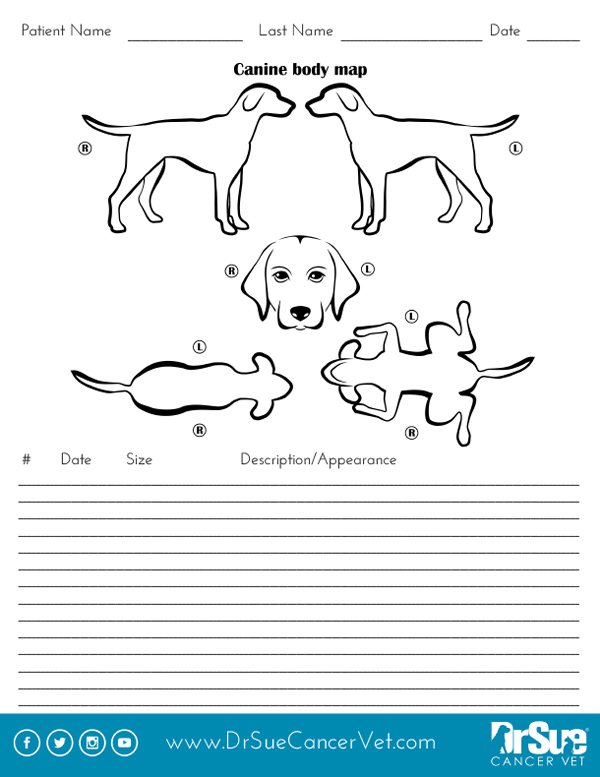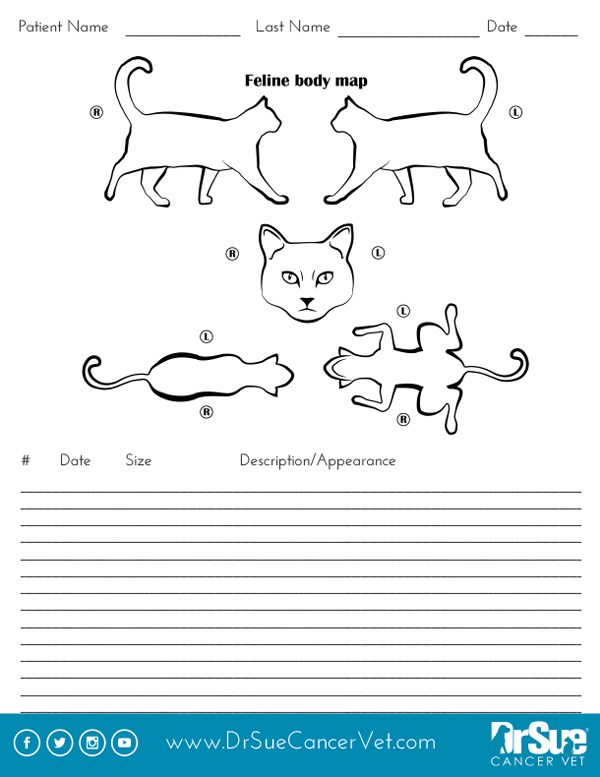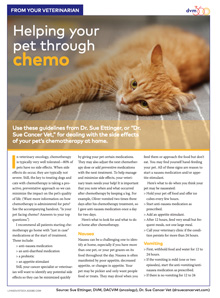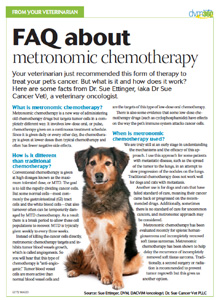Dr. Sue has compiled some of her most useful articles, tips and more!
Skin Maps
Here are dog and cat skin maps to use at home or in your clinic to keep track of lumps and bumps. Use this with your calipers to note where the mass is and the size. No one can look at a mass or feel a mass and know what it is. Remember, my See Something, Do Something. Why Wait? Aspirate. ® guidelines:
See Something: If the mass is the size of a pea (1 cm) and there for a month
Do Something: go to the veterinarian for an aspirate
#WhyWaitAspirate
Most skin and subcutaneous masses can be cured with surgery alone if we find them when they are small. So let’s find them when they are small and find out what they are with an aspirate before you remove them with surgery, so the first surgery is the only surgery your pet or patient needs.
Click an image below to download and print.
Chemotherapy Info Sheets
FAQ ABOUT CHEMOTHERAPY IN PETS
In veterinary oncology, chemotherapy is often recommended to control a pet’s cancer, prolong survival and maintain a good or even excellent quality of life. What risks should clients know about, and what can they expect during the process? This client handout contains insights from Dr. Sue Ettinger, or “Dr. Sue Cancer Vet,” as her clients call her.
HELPING A PET THROUGH CHEMO AT HOME
The good news? 80% of pets have little to no side effects from chemotherapy treatment. And of the 15 to 20% that do, they are often not severe. So, whew. Still, being prepared for any signs of illness or side effects goes a long way to reassuring clients after a cancer diagnosis. Use this handout, developed by oncologist Sue Ettinger, DVM, DACVIM, to help walk clients through how to care for their pet before, during and after chemotherapy.






